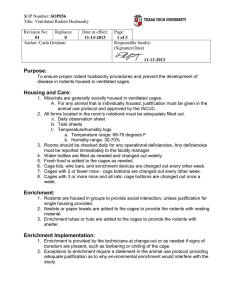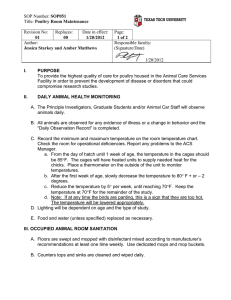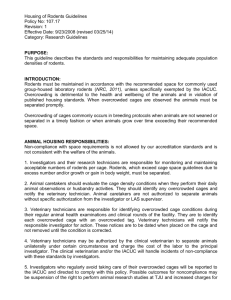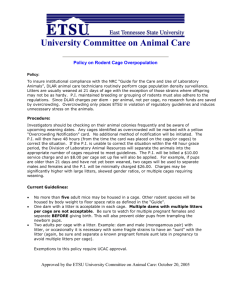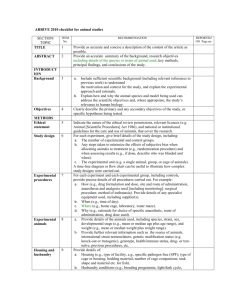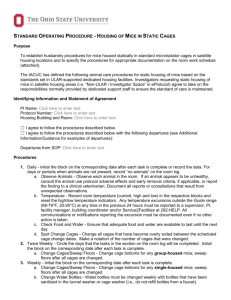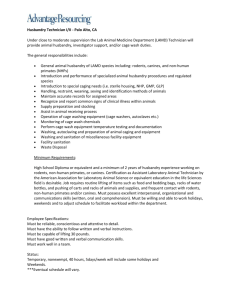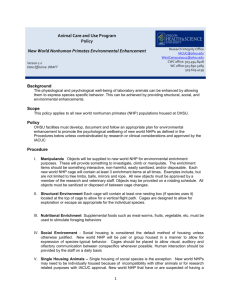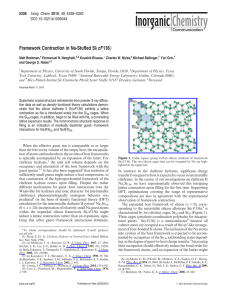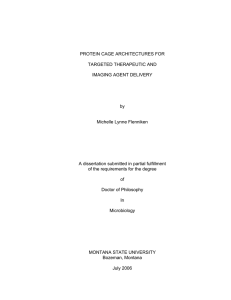SOP055 Title: Conventional Rodent Husbandry Revision No: Replaces:
advertisement
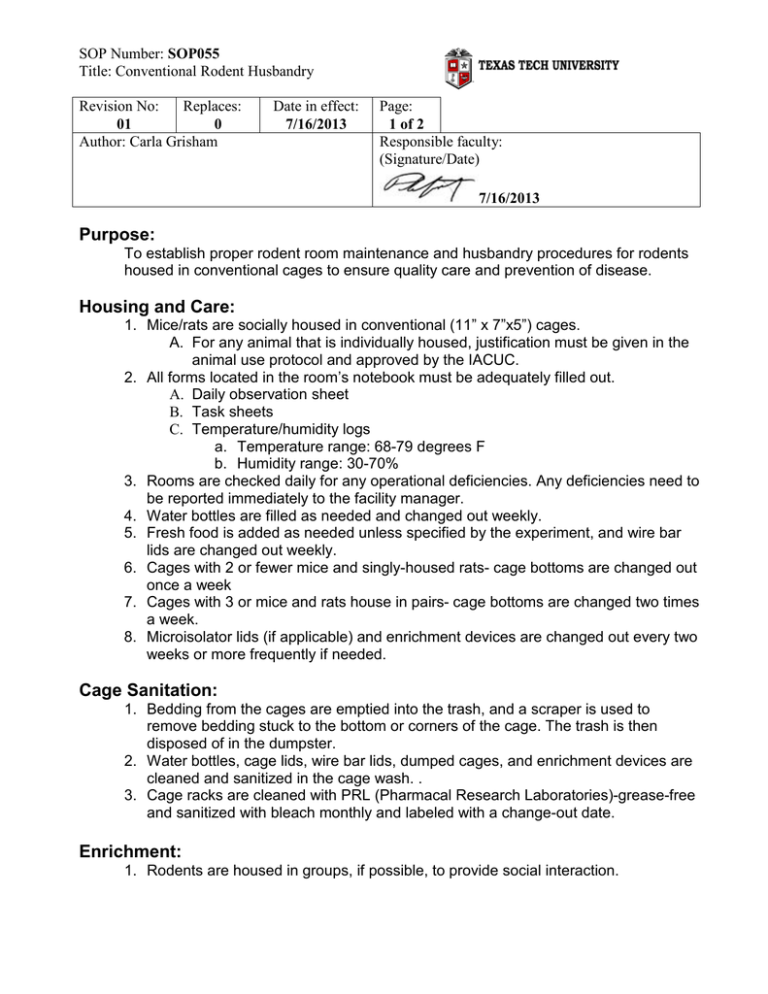
SOP Number: SOP055 Title: Conventional Rodent Husbandry Revision No: Replaces: 01 0 Author: Carla Grisham Date in effect: 7/16/2013 Page: 1 of 2 Responsible faculty: (Signature/Date) 7/16/2013 Purpose: To establish proper rodent room maintenance and husbandry procedures for rodents housed in conventional cages to ensure quality care and prevention of disease. Housing and Care: 1. Mice/rats are socially housed in conventional (11” x 7”x5”) cages. A. For any animal that is individually housed, justification must be given in the animal use protocol and approved by the IACUC. 2. All forms located in the room’s notebook must be adequately filled out. A. Daily observation sheet B. Task sheets C. Temperature/humidity logs a. Temperature range: 68-79 degrees F b. Humidity range: 30-70% 3. Rooms are checked daily for any operational deficiencies. Any deficiencies need to be reported immediately to the facility manager. 4. Water bottles are filled as needed and changed out weekly. 5. Fresh food is added as needed unless specified by the experiment, and wire bar lids are changed out weekly. 6. Cages with 2 or fewer mice and singly-housed rats- cage bottoms are changed out once a week 7. Cages with 3 or mice and rats house in pairs- cage bottoms are changed two times a week. 8. Microisolator lids (if applicable) and enrichment devices are changed out every two weeks or more frequently if needed. Cage Sanitation: 1. Bedding from the cages are emptied into the trash, and a scraper is used to remove bedding stuck to the bottom or corners of the cage. The trash is then disposed of in the dumpster. 2. Water bottles, cage lids, wire bar lids, dumped cages, and enrichment devices are cleaned and sanitized in the cage wash. . 3. Cage racks are cleaned with PRL (Pharmacal Research Laboratories)-grease-free and sanitized with bleach monthly and labeled with a change-out date. Enrichment: 1. Rodents are housed in groups, if possible, to provide social interaction. SOP Number: SOP055 Title: Conventional Rodent Husbandry Revision No: 01 Replaces: 0 Date in effect: 7/16/2013 Page: 2 of 2 2. Nestlets or paper towels are added to the cages to provide the rodents with nesting material. 3. Enrichment tubes or huts are placed in the cages to provide the rodents with shelter. Enrichment Implementation: 1. Enrichment is provided by the technicians at change-out or as needed if signs of boredom are present, such as barbering, circling of the cage, etc. 2. Exceptions to enrichment require a statement in the animal use protocol providing adequate justification as why environmental enrichment would interfere with the study. Animal Room Sanitation: 1. Floors are swept daily and mopped with disinfectant mixed according to manufacturer’s recommendations at least twice a week. Use dedicated broom and mop in the room. 2. Weekly/As needed- All surfaces (including door frames, lights, and vents) are wiped down with disinfectant mixed according to manufacturer’s recommendations. 3. Monthly- Floors, walls, and ceiling should be disinfected according to manufacturer’s recommendations. Animal Health Monitoring: 1. Animals are observed daily by animal care staff for any evidence of illness or change in behavior. A. Everyone with access to the animal facility is responsible for immediately informing the facility manager or university veterinarian when an animal becomes ill or a change in behavior is observed. 2. In the event of suspected illness: A. Record your observation on the treatment/observation sheet- include the date, animal #/cage ID, the problem observed, and initials B. Contact the ACS facility manager or the university veterinarian: Dr. Tiffanie Brooks, University Veterinarian, Animal Care Services. 806-834-8588 Office 806-239-2120 Cell Phone Carla Grisham, Manager, Animal Care Services. 806-834-3437 Office 254-913-5156 Cell Phone
